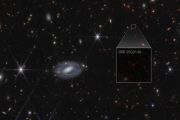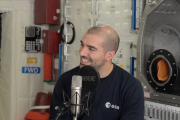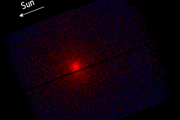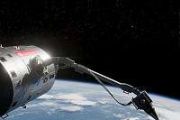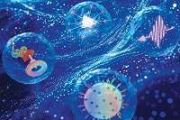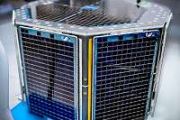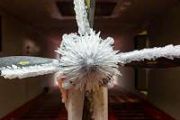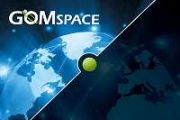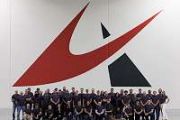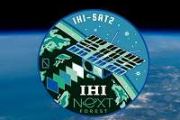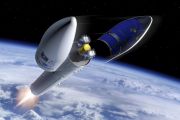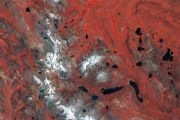
Copernical Team
The future of ESA Transportation
 Video:
00:06:07
Video:
00:06:07
Space is huge and essential to humankind, fuelling knowledge, supporting our economies and driving global prosperity. None of this would be possible without reliable access to space.
Since 1979, Europe has relied on the Ariane rockets and Vega series to launch its missions. Today, with Ariane 6 and Vega-C, ESA ensures Europe's autonomous and independent access to space. But we are also looking ahead. With the Ariane Smart Transfer and Release In-orbit Ship (ASTRIS), Phoebus, P160C boosters, the MR-10 engine and more, ESA is enhancing its rockets with new innovations that improve cost, performance, capability and sustainability.
ESA is also
DLR and NASA expand Artemis partnership with enhanced lunar radiation detectors
 DLR and NASA have signed a renewed agreement to strengthen their collaborative efforts in space medicine, with a particular emphasis on radiation research. The announcement came during the Paris Air Show on 16 June 2025, underscoring the growing need to understand and mitigate radiation risks for astronauts on deep space missions.
A central element of this partnership is the deployment of
DLR and NASA have signed a renewed agreement to strengthen their collaborative efforts in space medicine, with a particular emphasis on radiation research. The announcement came during the Paris Air Show on 16 June 2025, underscoring the growing need to understand and mitigate radiation risks for astronauts on deep space missions.
A central element of this partnership is the deployment of Lunar dust poses lower health risk than urban air pollution study shows
 New research led by the University of Technology Sydney (UTS) reveals that lunar dust is considerably less toxic to human lung cells than typical Earth-based air pollution. This finding offers reassurance for NASA's Artemis missions, which aim to establish a sustained human presence on the moon.
The study, published in Life Sciences in Space Research, examined the effects of advanced lunar
New research led by the University of Technology Sydney (UTS) reveals that lunar dust is considerably less toxic to human lung cells than typical Earth-based air pollution. This finding offers reassurance for NASA's Artemis missions, which aim to establish a sustained human presence on the moon.
The study, published in Life Sciences in Space Research, examined the effects of advanced lunar Biomass satellite returns striking first images of forests and more

Today, at the Living Planet Symposium, ESA revealed the first stunning images from its groundbreaking Biomass satellite mission – marking a major leap forward in our ability to understand how Earth’s forests are changing and exactly how they contribute to the global carbon cycle. But these inaugural glimpses go beyond forests. Remarkably, the satellite is already showing potential to unlock new insights into some of Earth’s most extreme environments.
How Solar Energy Innovations from Space Technology Are Powering Earth's Future
 Solar energy has long been a cornerstone of sustainable power solutions, but many don't realize how innovations originally developed for space technology are driving breakthroughs here on Earth. Companies like a href="https://www.smartsolarenergyco.com/">https://www.smartsolarenergyco.com/ /a> are leveraging these advanced technologies to develop smarter, more efficient solar energy systems tha
Solar energy has long been a cornerstone of sustainable power solutions, but many don't realize how innovations originally developed for space technology are driving breakthroughs here on Earth. Companies like a href="https://www.smartsolarenergyco.com/">https://www.smartsolarenergyco.com/ /a> are leveraging these advanced technologies to develop smarter, more efficient solar energy systems tha Astrology in the Space Age: How Our Birth Charts Might Evolve with Interplanetary Living
 As we become multi-planetary as a species, with ambitious Mars colonizing and lunar settlement efforts already well underway, we must consider how this push into space will upset one of our most enduring interpretive systems: astrology.
As we become multi-planetary as a species, with ambitious Mars colonizing and lunar settlement efforts already well underway, we must consider how this push into space will upset one of our most enduring interpretive systems: astrology. NASA spacecraft around the moon photographs the crash site of a Japanese company's lunar lander
This request seems a bit unusual, so we need to confirm that you're human. Please press and hold the button until it turns completely green. Thank you for your cooperation!
Press and hold the button
If you believe this is an error, please contact our support team.
185.132.36.159 : 22bed8cc-0666-4682-a405-e7c59d37
Thick Martian clays may have formed in stable ancient lakebeds
 New research led by the University of Texas at Austin reveals that thick layers of clay on Mars likely formed in ancient, stable lakebeds, creating environments that could have supported early life. These clay-rich regions, often spanning hundreds of feet, owe their formation to abundant water and minimal geological disruption, according to findings published in Nature Astronomy.
The study
New research led by the University of Texas at Austin reveals that thick layers of clay on Mars likely formed in ancient, stable lakebeds, creating environments that could have supported early life. These clay-rich regions, often spanning hundreds of feet, owe their formation to abundant water and minimal geological disruption, according to findings published in Nature Astronomy.
The study Northrop Grumman expands use of NVIDIA AI to boost autonomous space operations
 Northrop Grumman Corporation is deepening its collaboration with NVIDIA by integrating the NVIDIA Omniverse simulation platform into space applications and utilizing the NVIDIA Isaac Lab framework to advance AI for autonomous spacecraft operations.
The aerospace company plans to develop a comprehensive AI robotics architecture capable of supporting a broad range of complex space environmen
Northrop Grumman Corporation is deepening its collaboration with NVIDIA by integrating the NVIDIA Omniverse simulation platform into space applications and utilizing the NVIDIA Isaac Lab framework to advance AI for autonomous spacecraft operations.
The aerospace company plans to develop a comprehensive AI robotics architecture capable of supporting a broad range of complex space environmen Tidal forces from the Sun may have shaped Mercury's tectonic features
 New research from the University of Bern reveals that tidal forces from the Sun may have significantly contributed to the formation of Mercury's hills and cliffs, challenging the long-standing belief that these features resulted solely from planetary cooling and contraction. The findings draw on models of Mercury's orbit and rotation, and future studies will be supported by data from ESA and JAX
New research from the University of Bern reveals that tidal forces from the Sun may have significantly contributed to the formation of Mercury's hills and cliffs, challenging the long-standing belief that these features resulted solely from planetary cooling and contraction. The findings draw on models of Mercury's orbit and rotation, and future studies will be supported by data from ESA and JAX 





